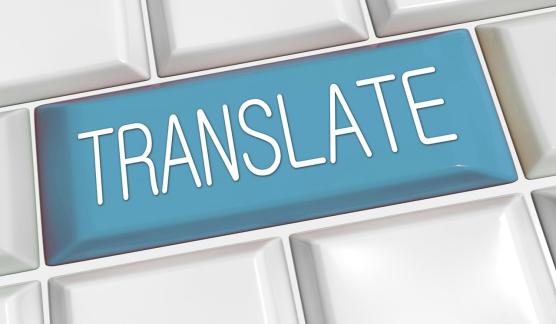Artlangs’ professional document translation services are tailored to specific document formats to ensure the highest linguistic accuracy while preserving layout and structural integrity. Our expertise spans a wide range of document formats to meet diverse industry needs and deliver seamless, high-quality translations. Below is a detailed list of document formats we support. Here’s the updated table, including SCORM and video file formats, along with spontaneous language and mentions of DTP where relevant:
Format
Description
Translation Services
MS Word (DOC/DOCX)
Widely used word processing format for text documents.
We provide precise translation and formatting services for Word documents, maintaining the original structure and ensuring compatibility.
PDF
Portable Document Format used for distributing read-only documents.
Artlangs translates PDFs while preserving layout, graphics, and embedded elements, offering DTP services when needed for a consistent visual appearance.
Adobe InDesign (INDD)
A format used for desktop publishing and graphic design projects.
We specialize in translating InDesign files, preserving complex layouts and design elements. Our DTP team ensures the translated version matches the original.
Adobe FrameMaker (FM)
A format used for creating and managing large, structured documents.
Artlangs translates FrameMaker documents, ensuring technical accuracy and maintaining structured formatting, often involving DTP for professional output.
HTML
The standard format for web pages and online content.
Artlangs translates HTML files while preserving code integrity, ensuring localized content displays correctly across platforms.
XML
Extensible Markup Language used for data structuring and exchange.
We handle XML files, supporting structured data and ensuring consistency across tagged content for technical documentation and digital applications.
JSON
JavaScript Object Notation used for transmitting data between web applications.
We translate JSON files, maintaining structure and context for localized software and web applications without disrupting data parsing.
XLIFF
XML Localization Interchange File Format used for standardized localization projects.
Artlangs handles XLIFF files to facilitate efficient translation workflows, maintaining key tags and compatibility with localization tools.
MadCap Flare
A format used for creating and managing technical documentation and help systems.
We translate MadCap Flare files, preserving topic-based structures, cross-references, and layouts to ensure seamless integration and usability.
Google Docs
Cloud-based document format used for collaborative word processing.
Artlangs provides translation services for Google Docs while ensuring that document structure, formatting, and collaboration features are preserved.
PowerPoint (PPT/PPTX)
Format for creating presentations with slides.
We translate PowerPoint presentations, retaining layouts, embedded media, and text formatting for professional, localized slideshows. DTP services are provided as needed.
Excel (XLS/XLSX)
Spreadsheet format used for data analysis and reporting.
Artlangs ensures precise translation of Excel documents, including formulas and tables, preserving functionality and layout.
Text (TXT)
Plain text format with no embedded formatting.
We translate text files while ensuring proper encoding and context, ideal for basic content and code strings.
Markdown (MD)
Lightweight markup language for formatting text in a readable manner.
Artlangs translates Markdown documents, preserving formatting syntax and ensuring that the final output is ready for display or web integration.
Rich Text Format (RTF)
Format used for documents with simple formatting.
We translate RTF files while maintaining basic formatting elements, ensuring cross-platform compatibility.
QuarkXPress (QXP)
A desktop publishing format used for creative and editorial projects.
Artlangs provides translation for QuarkXPress files, ensuring layout integrity and accurate localization. DTP services are available for complex designs.
Photoshop (PSD)
Format for image editing that supports multiple layers.
We translate text within Photoshop files, reintegrating translated content while preserving design elements and layers.
Illustrator (AI)
Vector graphic format used for creating illustrations and logos.
Artlangs translates text in Illustrator files, ensuring the visual and design consistency of localized content.
AutoCAD (DWG)
Format used for engineering and architectural drawings.
We translate annotations and text within AutoCAD files, preserving technical details and ensuring accurate formatting for professional use.
Visio (VSD/VSDX)
Diagramming format used for flowcharts, organizational charts, and schematics.
Artlangs translates text within Visio files, ensuring that the diagram structure and content remain clear and accurate.
EPS (Encapsulated PostScript)
A file format used for graphics and illustrations.
We handle text translations in EPS files, ensuring that all graphic content and associated text are accurately localized.
DTP Formats (Desktop Publishing)
General formats such as PageMaker, CorelDRAW, and Publisher used for print and digital publishing.
Artlangs offers translation and DTP services, preserving layout, typography, and design for visually complex projects.
CSV (Comma-Separated Values)
Format used for data storage in tabular form.
We translate CSV files while maintaining data integrity and supporting multilingual data outputs.
YAML
A human-readable data serialization format used in configuration files.
Artlangs translates YAML files, ensuring that structure and syntax are intact for seamless integration in localized software.
PO/MO Files
Formats used for gettext translation systems, often for software localization.
We translate PO and MO files, paying attention to context and ensuring all UI elements are properly localized.
Video Formats (MP4, MOV, AVI)
Common video formats used for multimedia content.
Artlangs translates video content, including on-screen text and voiceovers, and offers subtitle services for comprehensive localization.
SCORM
Format for eLearning content, enabling learning management system (LMS) integration
We provide translation for SCORM packages, maintaining the structure and interactive elements, ensuring a seamless experience for multilingual learners.
SUB/SRT (Subtitles)
Formats used for subtitle text in video content.
Artlangs translates subtitle files, ensuring proper timing and formatting for accurate and culturally relevant video content.
























